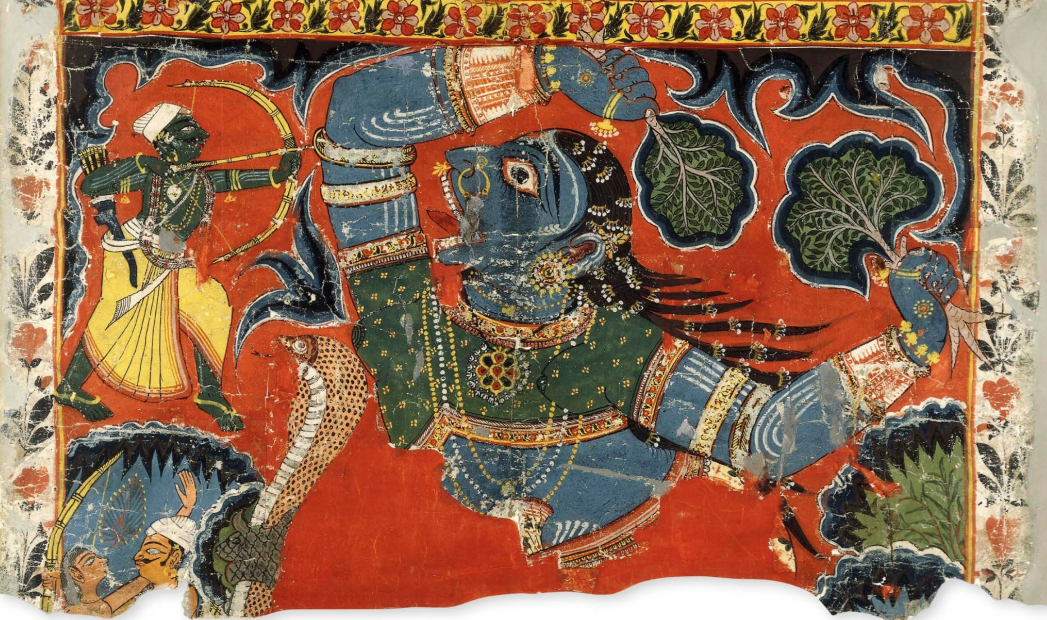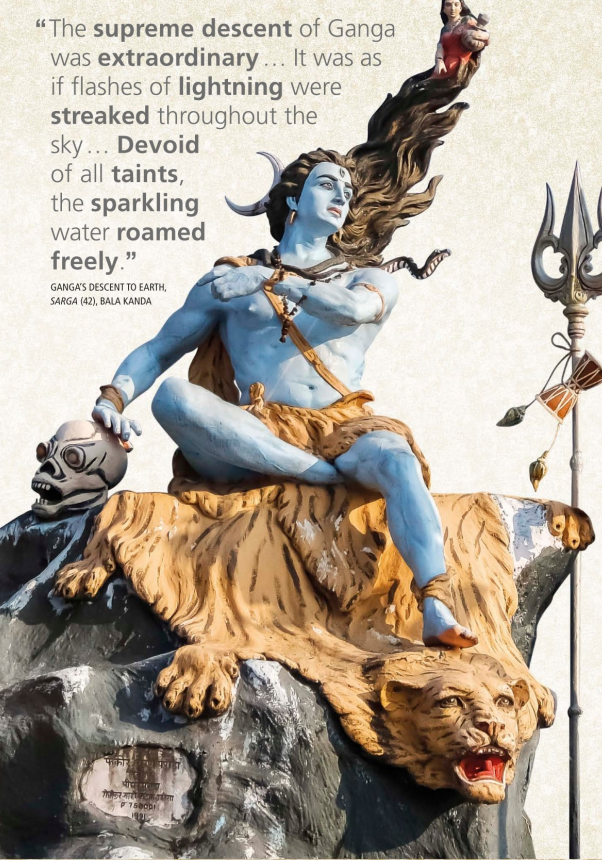002. Ramayana - The value of toil, grit and determination
The turmoil, havoc and horror
The war with Tataka
When Vishvamitra takes Rama and Lakshmana to the forest to protect his yajna from the asuras, they encounter the asura Tataka. Vishvamitra instructs Rama to kill her.
This was not an easy task. The place was Anga, which had faced the wrath of Shiva, the God of destruction, scorched the body of Kama, the God of love. This place is where he lost his body (Anga). Here the God became Ananga - the bodiless one. They crossed the river Sarayu, and in its southern bank found a dreadful and impenetrable forest before them. They could hear the roars and shrieks of horrific creatures.
The forest was cursed, dark and dense. This was the forest that was a garbage dump of sins that had been washed off the body of Indra when he was cleansed of his sins after killing Vritra. This forest encompassed two countries - Malada and Karusha. Once Indra was cleansed of his sins, he had granted them the boon of prosperity. The region remained blessed till the arrival of Tataka. She could change her form and was as powerful as a thousand elephants.
Here we see the roller coaster of the society from prosperity to horror of being a dumpyard of sins, and then again prosperity, which again bred the likes of Tataka.
The cyclical nature of the world is depicted here. And the importance of toil that is required to make things in place is very important at this point.
Also the difference between Asura and Sura is alluded. In Sanskrit Sura means harmony, symphony, being in tune. And opposite of that is Asura. Asura are beings who are not in harmony of the law of nature (dharma). They manifest the lower nature of being that would be typically associated with the ego, laziness, greed, lust, anger, agression, fear, hatred, jealosy, etc. These are beings that manifest the darker aspects of the human psyche. It is shown here that it is so easy for any prosperous and harmonious space to be overrun by the discordance of Asuras, if there is no continuous and unending toil to keep up the place of its peace and prosperity. In other words, entropy always engulfs any system, left to itself!
 (This 19th century pata or scroll painting from Murshidabad, West Bengal, shows the scene where Rama kills Tataka.)
(This 19th century pata or scroll painting from Murshidabad, West Bengal, shows the scene where Rama kills Tataka.)
The war with Maricha and Subhahu
As if this was not enough, as soon as they moved forward, deeper into the forest after killing Tataka, they encountered Maricha and Subhahu inside the Siddhasharma.
Now, Siddhashrama was the abode of Vishnu, which was once a beautiful place, but had become a hell because of the presence of Maricha and Subhahu. They were the sons of Tataka. Again there was a huge war in which Rama defeated them. He killed Subhahu and threw away Marcha into the ocean.
The accomplishment after toil
The forest was now cleansed of the asuras. The forest was now a beautiful place, and the people of the region were now free to live in peace. Also pleased by Rama’s valor Vishvamitra gave him divine gifts - mantras when chanted would present him weapons of every nature. He received the Dandachakra (a magical staff), the vajra (thunderbolt) which belonged to Shiva, the Dharmachakra and Kalachakra , staffs that keep dharma and time intact.
The descent of the Ganga
The story of descent of Ganga from heavens to earth is another narrative of hard work, toil, grit, and sheer determination.
Sagara a king has two wives - Sumati and Keshini. He had 60,000 sons from Sumati and one son - Asamanja from Keshini. Sagara wanted to perform the Ashvamedha Yajna, but the horse was stolen by Indra. Sagara sent his sons to find the horse. They searched for a long time and finally found it in the ashram of Kapila. They accused him of stealing the horse and attacked him. Kapila opened his eyes and turned all the 60,000 sons to ashes. Sagara seeing his sons not coming sends his grandson Anshuman to find them. Anshuman goes to the Rasatala and further down to the southwestern diggaja where he finds Kapila, the horse gazing and the ashes of his uncles. He gets the horse back and returns and becomes the king. But to be able to perform the last rights of his uncles he needs Ganga to come down to earth. That he is unable to. His grandson Bhagiratha does deep penance and pleases Brahma, who grants him the boon for bringing in Ganga, but then he warns that Ganga has immense force and it will devastate the earth when she descents. There has to be Shiva who has that power to tame her down as she descends.
So, Bhagiratha does another penance to Shiva and who pleased, agrees to help. Ganga descends into the shambles of the hair of Shiva, and her force dampens meandering within the dense foliage of his hair.
 (Statue of Shiva on the banks of the Ganga in Rishikesh, Uttarakhand. The river is shown as wrapped in his hair)
(Statue of Shiva on the banks of the Ganga in Rishikesh, Uttarakhand. The river is shown as wrapped in his hair)
The grit of generations
For anything worthwhile it is poignantly shown how great grit and toil is required not just of one person, but generations after generations. The point is about being resilient and not giving up, and have the unwavering focus and faith on the goal.

